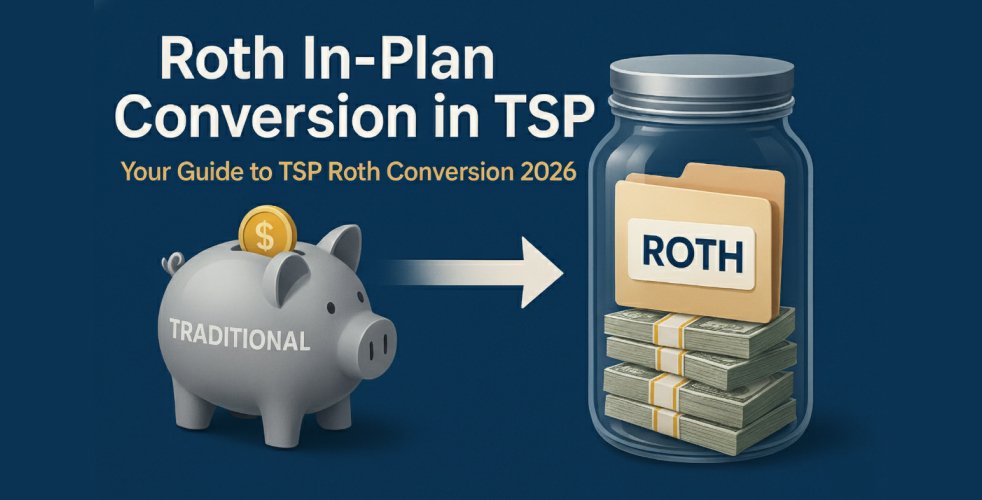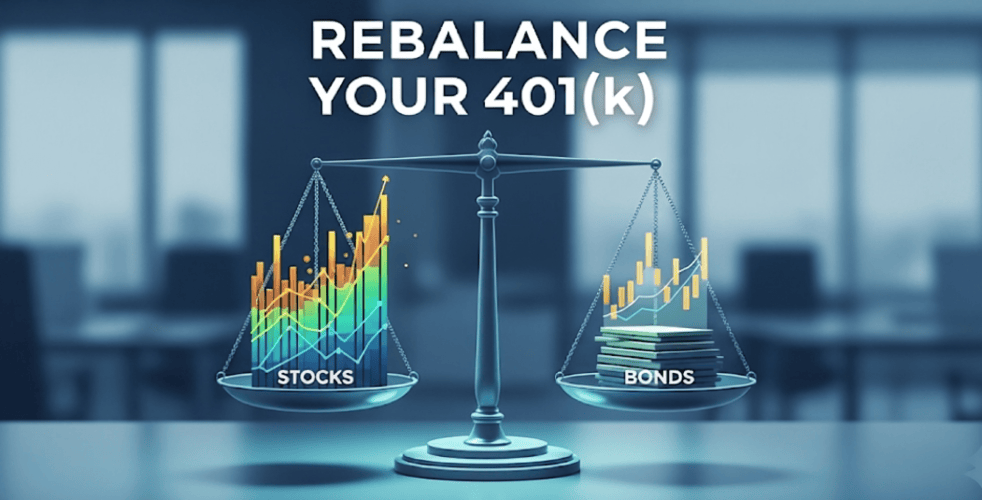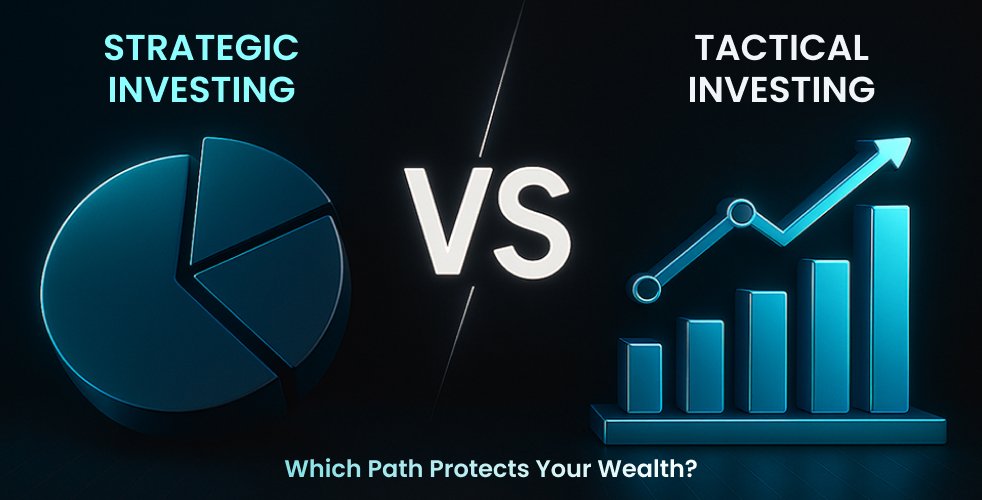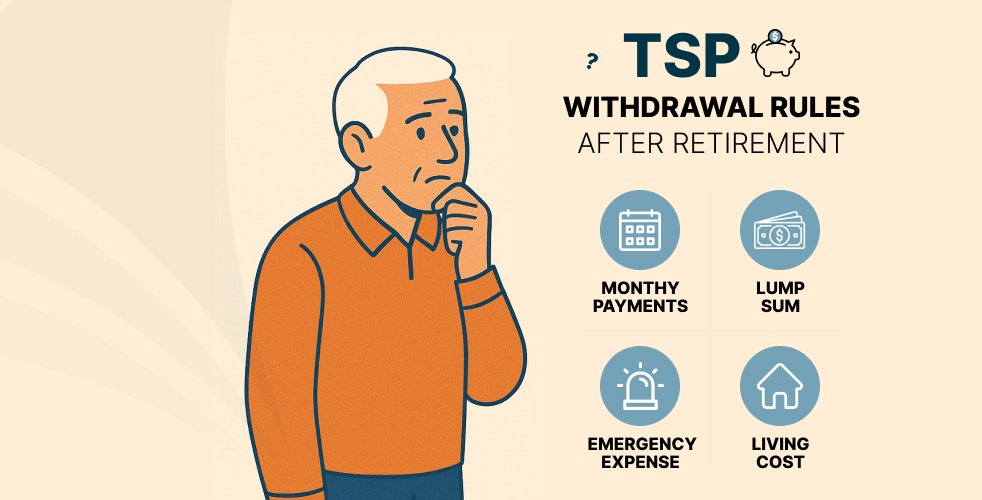
Planning for retirement starts with making smart choices, especially when it comes to your Thrift Savings Plan (TSP). Whether you’re just getting started or approaching retirement, understanding the TSP and how to maximize its investment options is key to long-term success.
In this guide, we’ll explore the core and Lifecycle (L) funds available through the TSP, highlight portfolio examples for different risk levels, and explain how our TSP Allocation Model can help you simplify and optimize your strategy.
Key Takeaways
- TSP offers five core funds managed by BlackRock and State Street.
- G Fund guarantees principal and is the lowest risk.
- C and S Funds offer the highest growth potential over time.
- Lifecycle (L) Funds auto-adjust based on retirement age.
- ETF equivalents exist for most funds outside of TSP.
- TSP Allocation Model helps achieve higher returns than individual funds.
What is the Thrift Savings Plan (TSP)?
The Thrift Savings Plan (TSP) is a defined-contribution retirement plan for federal employees and members of the uniformed services. Similar to a 401(k), it offers low fees and streamlined investment options. The plan is overseen by the Federal Retirement Thrift Investment Board, with fund management handled by BlackRock and State Street Global Advisors.
There are two main types of TSP accounts:
- Traditional TSP: Contributions are tax-deferred; taxes are paid upon withdrawal.
- Roth TSP: Contributions are made with after-tax dollars; withdrawals are tax-free in retirement.
TSP participants enjoy agency matching contributions, ultra-low expense ratios, and access to five core index funds along with Lifecycle (L) Funds designed to align with retirement timelines.
TSP Core Funds Explained: G, F, C, S, and I Investment Options
The Thrift Savings Plan (TSP) offers five core investment funds designed to help federal employees and uniformed service members grow their retirement savings. These funds cover a range of investment options—from safe government securities to high-growth international stocks.
Four of the funds—F, C, S, and I—are index funds. They track different parts of the financial markets, like U.S. bonds, large and small U.S. companies, and international markets. The fifth fund, the G Fund, is unique. It invests in government-issued securities and is the only TSP fund that protects your principal with zero market risk.
Each fund supports a different risk level. You can choose one or a mix of them based on your comfort with risk and your retirement goals. Fund prices update daily and reflect market performance minus small administrative costs. While you can’t invest in TSP funds outside the plan, many of them are similar to popular iShares ETFs from BlackRock.
This guide will help you understand each core fund, who it’s best for, and how to build a smart TSP portfolio that fits your long-term needs.
G Fund: Government Securities Investment Fund
The G Fund is the safest of the TSP investment options. Instead of investing in a stock or bond index, it holds special U.S. Treasury securities issued only for TSP participants. These securities are backed by the U.S. government, so your principal is guaranteed and cannot lose value.
While the G Fund doesn’t offer high returns like stock-based funds, it provides steady interest earnings and protects your money from market risk. It’s especially useful for conservative investors or those nearing retirement who want stability.
Before 2015, new TSP accounts automatically used the G Fund unless another option was chosen. Today, the default is an age-appropriate Lifecycle Fund, but the G Fund remains available to anyone.
Interest rates in the G Fund are based on longer-term Treasury rates, helping it keep pace with inflation without market exposure. For many TSP participants, it’s a reliable foundation for low-risk retirement investing.
F Fund: Fixed Income Index Investment Fund
The F Fund is a bond fund that gives TSP participants access to a wide range of fixed-income investments. It tracks the Bloomberg U.S. Aggregate Bond Index, which includes government bonds, corporate debt, mortgage-backed securities, and other dollar-denominated investment-grade bonds.
This fund is considered low to moderate risk and is commonly used to balance the more volatile stock funds. It provides regular income through interest payments and can help reduce overall portfolio risk. However, its performance can go down if interest rates rise.
The F Fund is a good choice for investors looking to add steady income and stability to their retirement portfolio.
C Fund: Common Stock Index Investment Fund
The C Fund is one of the most popular TSP funds. It follows the S&P 500 Index, which includes 500 of the largest U.S. companies like Apple, Amazon, and Microsoft. This fund is focused on long-term growth and is suitable for investors who can handle some ups and downs in the market.
As a stock-based fund, the C Fund comes with higher risk than bond or government funds, but historically it has delivered strong returns over time. It’s a solid core option for building retirement wealth, especially for those with many years until retirement.
S Fund: Small Capitalization Stock Index Investment Fund
The S Fund offers access to smaller U.S. companies by tracking the Dow Jones U.S. Completion Total Stock Market Index. It includes thousands of small- and mid-sized firms that aren’t part of the S&P 500.
This fund is more volatile than the C Fund but also offers greater growth potential. It’s a smart choice for investors looking to expand their U.S. stock exposure and take advantage of emerging business growth.
The S Fund is best used alongside the C Fund for a more complete U.S. equity strategy.
I Fund: International Stock Index Investment Fund
The I Fund now tracks the MSCI All Country World Investable Market Index (ACWI IMI) ex USA, ex China, and ex Hong Kong, following the benchmark update announced in September 2024. This expanded index includes more than 5,000 large-, mid-, and small-cap companies across over 40 developed and emerging market countries.
The new benchmark significantly broadens the fund’s international scope, providing exposure to a more diverse mix of global equities beyond traditional developed markets.
While the I Fund enhances portfolio diversification, it also introduces greater risk, driven by currency fluctuations, geopolitical uncertainty, and global market volatility.
This fund is best suited for investors seeking comprehensive international exposure within their TSP portfolios—particularly those with a higher risk tolerance and a long-term investment horizon.
📌 Important Reminder: Except for the G Fund, all other TSP funds carry market risk. Diversification across these options is essential for balancing risk and optimizing long-term retirement outcomes. Investors should choose based on their retirement goals, risk tolerance, and market outlook.
Lifecycle Funds (L Funds)
Lifecycle (L) Funds are professionally managed, age-based target-date funds designed to simplify retirement investing. Each fund gradually shifts from a growth-oriented allocation to a more conservative, capital-preserving mix as the target retirement date approaches. Asset allocations are rebalanced quarterly to follow a predetermined glide path.
Available L Funds Include:
- L Income – for those currently in or near retirement
- L 2025
- L 2035
- L 2045
- L 2055
- L2065 – currently the most aggressive
Note: At Model Investing, we do not recommend the use of Lifecycle Funds, as their allocation decisions are based solely on age and do not adapt to changing market conditions. Our TSP Allocation Model offers a data-driven, dynamic approach designed to respond to evolving risks and opportunities in the market—something static target-date funds cannot do.
Ready to build a smarter TSP portfolio?
Best TSP Allocation Strategies by Risk Level
Your ideal TSP allocation should reflect your risk tolerance, retirement timeline, market outlook, and long-term financial goals. Below are example portfolios designed to match different investing styles and help you diversify your TSP holdings accordingly.
Conservative Portfolio
This portfolio focuses on capital preservation with minimal exposure to market volatility.
- 60% G Fund (government securities)
- 30% F Fund (bonds)
- 10% C Fund (large-cap U.S. stocks)
Balanced Portfolio
A mix of safety, income, and growth potential.
- 40% C Fund (large-cap U.S. stocks)
- 30% F Fund (bonds)
- 20% G Fund (stable foundation)
- 10% I Fund (international exposure)
Aggressive Portfolio
Designed for long-term growth with higher risk and volatility. Ideal for younger investors with a longer time horizon.
- 50% C Fund (large-cap U.S. stocks)
- 30% S Fund (small/mid-cap stocks)
- 20% I Fund (international equities)
📌 Keep in mind: While these sample portfolios offer a helpful starting point, they do not account for shifting market conditions. Our TSP Allocation Model dynamically adjusts your allocations based on current economic data and market trends—helping you stay positioned in the asset classes expected to perform best. This data-driven approach eliminates guesswork and ensures your strategy evolves along with the market.
Summary of TSP Investment Options for Smarter Retirement Planning
| Feature | Fund(s) | Description |
|---|---|---|
| Safest fund | G Fund | Government-backed, low-risk, safety of principal |
| Best for long-term growth | C Fund, S Fund | U.S. stock exposure with high growth potential |
| Global exposure | I Fund | Broad international exposure across developed and emerging markets |
| Automatic strategy | Lifecycle (L) Funds | Automatically adjusts based on retirement age (not recommended) |
| Smarter investing | TSP Allocation Model | Data-driven, personalized portfolio optimization |
How Our TSP Allocation Model Optimizes Your Account
Many investors fall short of their goals due to emotional decision-making, poor diversification, and a failure to adjust their portfolios over time.
Our data-driven, automated TSP Allocation Model is designed to help you:
- Customize your asset allocation using research-backed strategies
- Minimize risk through broad, strategic diversification
- Adjust your investments as market conditions evolve
- Avoid common behavioral mistakes that erode long-term returns
Conclusion: Choose the Right TSP Investment Strategy for Long-Term Success
Whether you’re drawn to the stability of the G Fund or the long-term growth potential of stock-based options like the C and S Funds, your success with the TSP starts with a clear, personalized strategy.
At Model Investing, we make it easy to take control of your retirement planning with our TSP Allocation Model—a data-driven tool that adapts to changing market conditions. With your free trial, you’ll gain instant access to our proven strategy, monthly model updates, and a step-by-step guide to managing your TSP account with confidence.
There’s no cost to get started. Just visit our Pricing page, activate your free trial, and start receiving expert allocation updates every month.
Take the first step toward smarter retirement investing. Join Model Investing today and invest with confidence.
FAQs
1. Which TSP fund is best for long-term growth?
The C and S Funds are generally considered the best TSP options for long-term growth. The C Fund invests in large-cap U.S. stocks (S&P 500), while the S Fund covers small- and mid-sized companies. These stock funds tend to offer higher returns over time, especially when held consistently over many years.
2. What’s the safest TSP investment?
The G Fund is the safest investment option in the TSP. It invests in U.S. Treasury securities specifically issued to the TSP, and it guarantees no loss of principal. This fund is ideal for risk-averse investors or those nearing retirement who want steady, low-risk returns.
3. How can I increase returns on my TSP?
To maximize your TSP returns, diversify across multiple funds based on your risk tolerance, contribute regularly, and rebalance your portfolio as needed. Using the TSP Allocation Model can automate these decisions using real market data to help you stay on track for retirement.
4. Can I change my TSP allocation anytime?
Yes, the TSP allows you to reallocate your contributions and move money between funds at any time. However, there are limits on how many interfund transfers you can make per month. It’s recommended to follow some type of strategy when adjusting your allocations.
5. What happens if I don’t select a fund mix?
If you don’t choose an allocation, your TSP contributions will automatically go into a Lifecycle (L) Fund based on your expected retirement date. While these funds gradually reduce risk over time, Model Investing does not recommend them because they follow a fixed path and don’t adjust for changing market or economic conditions.
6. How does the TSP Allocation Model work?
Our TSP Allocation Model analyzes historical fund performance, economic indicators, and market data to recommend an optimized investment mix. It helps you stay diversified, adapt to changing conditions, and eliminate emotional decision-making from your retirement strategy.
7. Can I lose money in my TSP account?
Yes, particularly in stock-based funds like the C, S, and I Funds, which are subject to market fluctuations. While short-term losses are possible during market downturns, a well-diversified, long-term strategy can help manage risk, recover losses, and grow your retirement savings over time.

An innovative approach for eaming higher returns with less risk
Download Report (1.2M PDF)You don’t want to look back and know you could’ve done better.
See PricingPosted in




